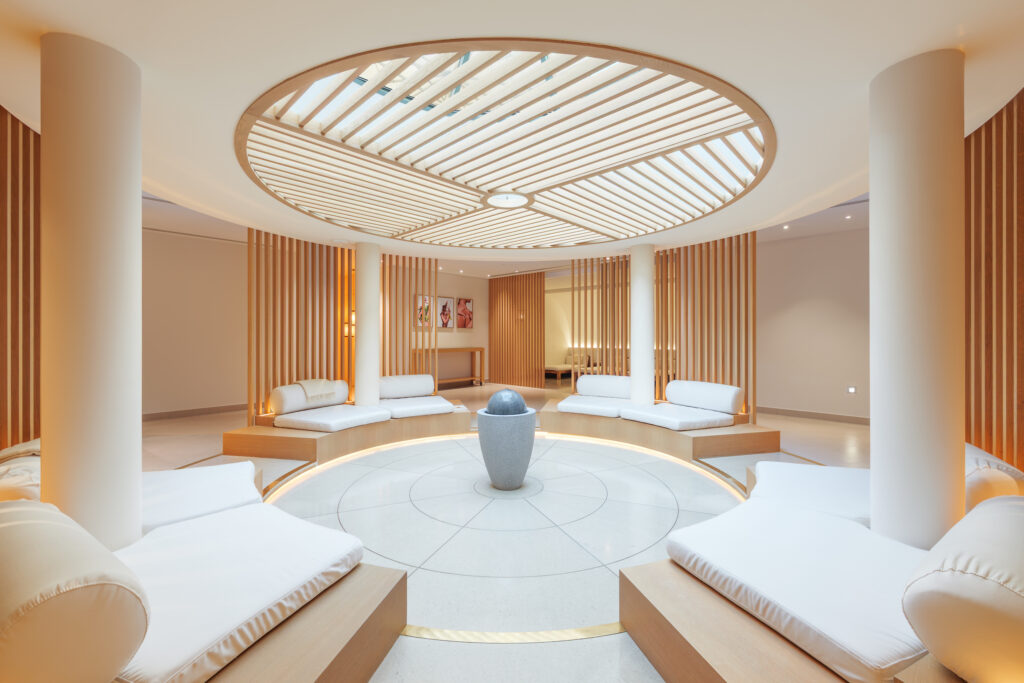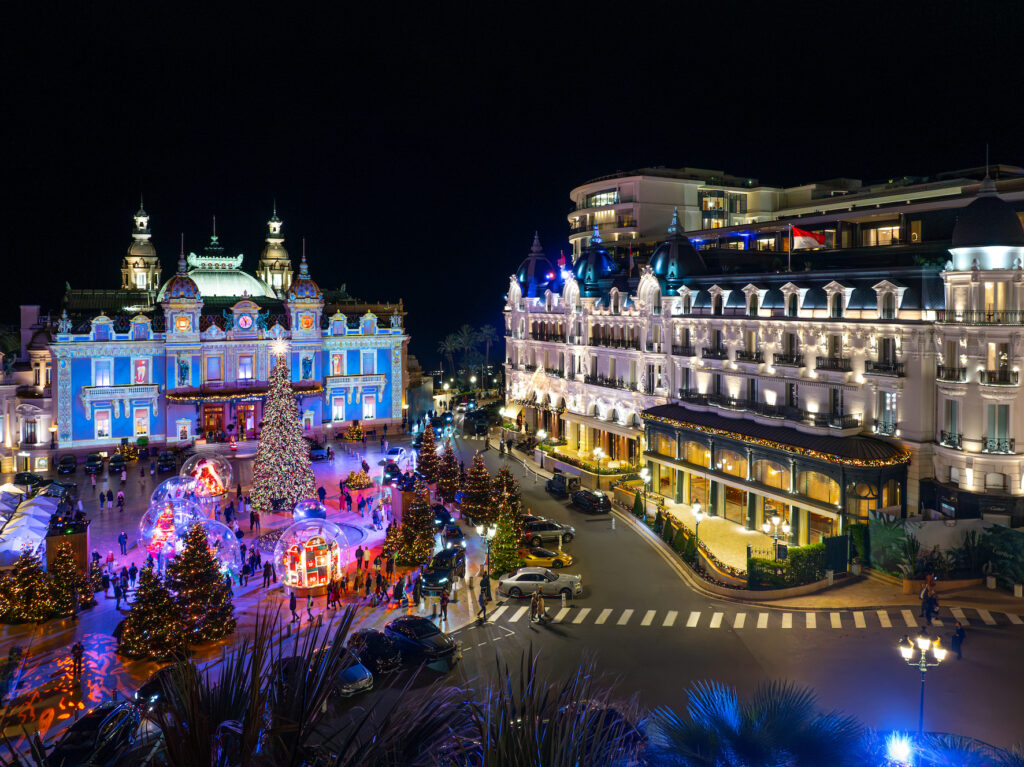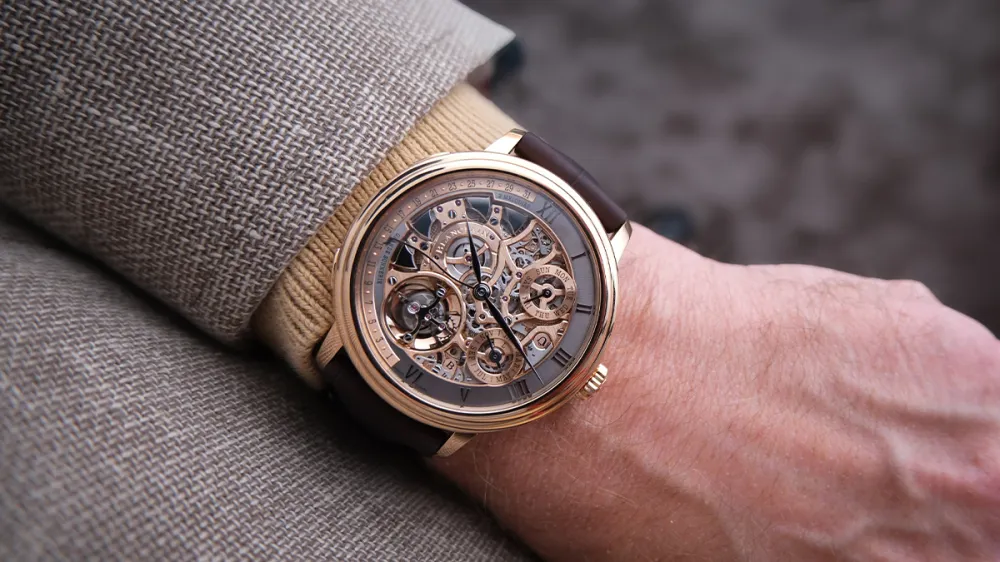Damen’s new Xplorer 80 is reinventing the rigid, research-vessel look of expedition yachts.
It’s time to throw out the idea of an explorer vessel having to look like Arnold Schwarzenegger in the first Terminator movie—a muscle-bound package that’s all straight lines and sharp angles.
Instead, Damen Yachting has conceived a very different type of expedition vessel, one that allows buyers to mix and match between three exteriors and interior types, each by well-known yacht design firms. The Xplorer 80, which the Dutch builder released yesterday at the Palm Beach International Boat Show, joins the Xplorer 60 and Xplorer 105 as part of its Xplorer series (rebranded from SeaXplorer), but it’s a very different expedition vessel from its siblings—or any other explorers on the water.
Rose Damen, managing director of Damen Yachting, calls the 262-footer a “crossover superyacht” that throws out the idea that an explorer yacht has to look like a modified research vessel. The exterior of the new 80M, depending on the designer, can range from a slightly rounded superstructure to extreme curves.

DAMEN YACHTING
The three exterior choices come from Azure Yacht Design (pictured), Harrison Eidsgaard, and Espen Oino, while the interiors are by Harrison Eidsgaard (pictured), Winch Design, and Reymond Langton. The designers all worked independently with Damen to create designs that would fit into a core platform.
The Dutch builder then pre-engineered the different interiors and exteriors so they can be interchangeable, depending on how the client wants to design it—another trait that is new to the rigid explorer design. The stern area can also be configured in multiple ways, from an enclosed helicopter hangar (with a helipad on top), to double tender garages, to a gym and wellness center, or even a dive center.
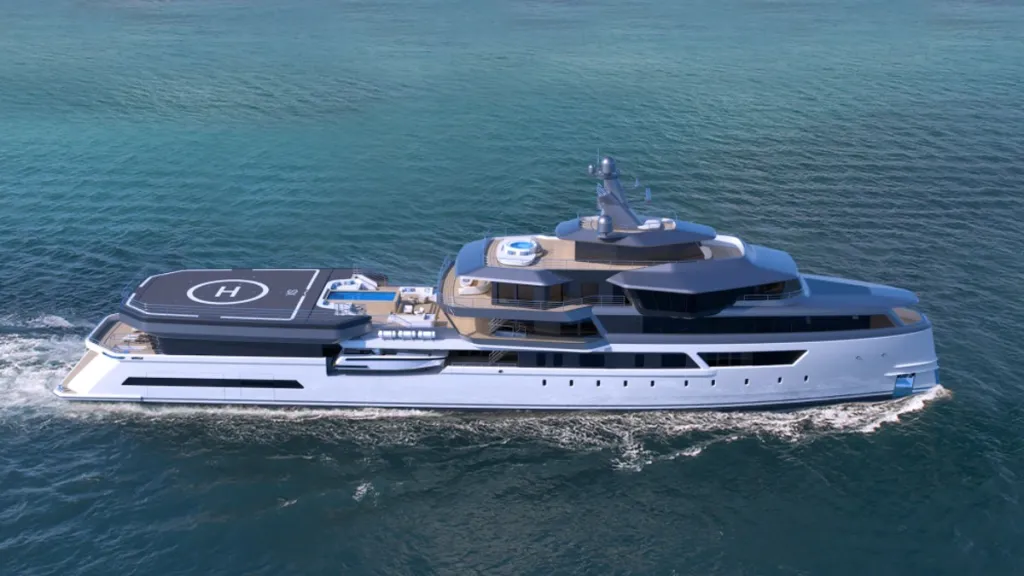
DAMEN YACHTING
“The design allows for a high level of flexibility,” said Enrique Tintore, the brand’s design manager, during the presentation. “If you don’t need a helicopter, we have many other options for that space—maybe a conference room, a large lounge or even an onboard laboratory.” The common denominator is that all options are consistent with the core design, he adds, allowing owners to mix and match interiors and exteriors without involving a “crazy amount of reverse engineering” for the shipyard. This plug-and-play approach means shorter build times and less costs for customizing a vessel.
Ben Harrison, cofounder of U.K. designer Harrison Eidsgaard, presented his firm’s interior concept, a sprawling New York-loft-style design that makes use of the tall ceilings, floor-to-ceiling windows, open-plan spaces, loose designer furniture, and even a fireplace. “We can play with the spaces and reallocate them according to the owner’s wishes, without having major implications for the technical design of the yacht,” said Harrison.
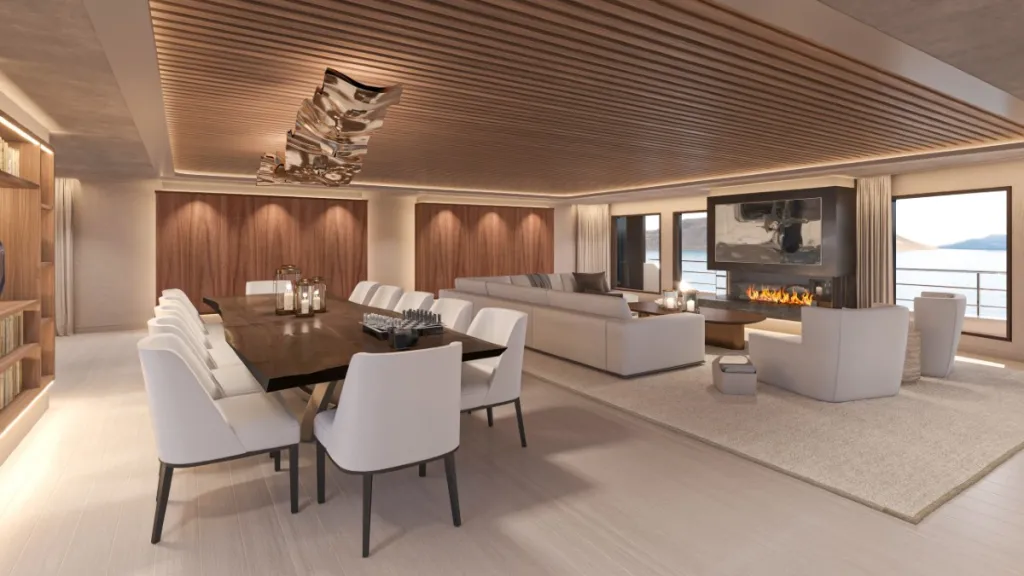
DAMEN YACHTING
The new 80 also has some shared un-explorer-like features, including an enclosed observation lounge and open nook on the bow, as well as a crow’s nest that stands nearly 100 feet above the vessel. “It’s an intimate space that allows for 360-degree views of the water,” said Tintore.
Despite the unusual exterior and interior offerings, says Tintore, the 262-footer retains the Xplorer line’s DNA. The vessel is designed to stay off-grid for 40 days at sea. Tintore noted that the original concept of these vessels being solely polar explorers has also been thrown out the window. Since the first was launched in 2015, Damen owners have visited tropical destinations with their expedition yachts.
The flexible layouts, adds Tintore, allows owners to configure their boats to match the conditions where they’ll be cruising. The new design should prompt competitors to reexamine their own explorer concepts and hopefully inject more flexibility—and fun—into their creations.




